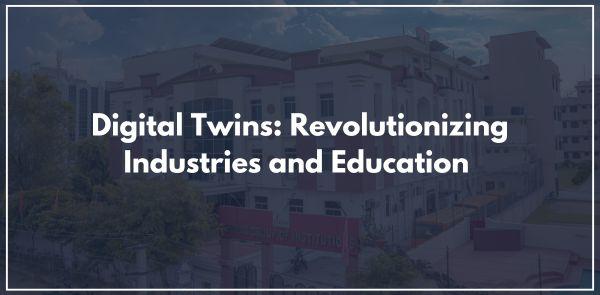
Introduction
In the rapidly evolving landscape of technology, the concept of digital twins has emerged as a transformative force across various sectors. A digital twin is a virtual representation of a physical object, system, or process that mirrors its real-world counterpart in real-time. This innovative technology enables organizations to optimize operations, enhance decision-making, and improve overall efficiency. As we delve into the intricacies of digital twins, we will explore their applications, benefits, challenges, and the role of educational institutions like the Poddar Group of Institutions in preparing the next generation of professionals for this burgeoning field.
Applications of Digital Twins
1. Manufacturing
In the manufacturing sector, digital twins are revolutionizing production processes. By creating virtual models of machinery and production lines, manufacturers can monitor performance, predict failures, and optimize operations. This leads to reduced downtime, increased productivity, and cost savings.
Predictive Maintenance
One of the most significant applications of digital twins in manufacturing is predictive maintenance. By analyzing data from sensors embedded in machinery, manufacturers can identify potential issues before they lead to failures. This proactive approach minimizes unplanned downtime and extends the lifespan of equipment.
Process Optimization
Digital twins also enable manufacturers to simulate different production scenarios, allowing them to identify bottlenecks and optimize workflows. By testing various configurations in a virtual environment, organizations can implement changes that enhance efficiency and reduce waste.
2. Healthcare
In the healthcare sector, digital twins are being used to create personalized treatment plans and improve patient outcomes. By modeling patient health data, healthcare providers can simulate various treatment scenarios and make informed decisions.
Personalized Medicine
Digital twins allow healthcare professionals to create virtual models of patients based on their medical history, genetics, and lifestyle. This enables the development of personalized treatment plans that are tailored to individual needs, improving the effectiveness of interventions.
Remote Monitoring
With the rise of telemedicine, digital twins can facilitate remote monitoring of patients. By continuously collecting data from wearable devices and health sensors, healthcare providers can track patient progress and intervene when necessary, ensuring timely care.
3. Urban Planning
Digital twins are playing a crucial role in the development of smart cities. Urban planners can create virtual models of urban environments to analyze traffic patterns, energy consumption, and resource allocation.
Traffic Management
By simulating traffic flow in a digital twin of a city, planners can identify congestion points and develop strategies to improve traffic management. This can lead to reduced travel times, lower emissions, and enhanced overall urban mobility.
Resource Optimization
Digital twins can also help urban planners optimize resource allocation, such as energy and water usage. By analyzing consumption patterns, cities can implement sustainable practices that reduce waste and promote environmental conservation.
4. Energy Management
In the energy sector, digital twins are being used to optimize the performance of power plants and renewable energy sources. By creating virtual models of energy systems, operators can monitor performance, predict failures, and enhance efficiency.
Renewable Energy Integration
Digital twins can facilitate the integration of renewable energy sources into the grid by simulating their performance under various conditions. This allows operators to optimize energy production and ensure a stable supply.
Grid Management
Digital twins can also be used to monitor and manage the electrical grid. By analyzing data from various sources, operators can identify potential issues and implement solutions that enhance grid reliability and resilience.

